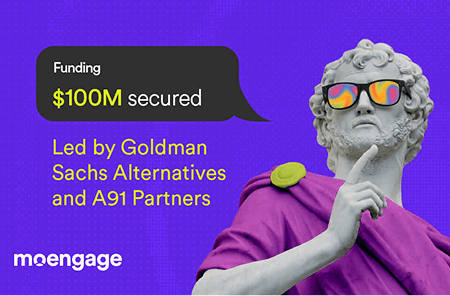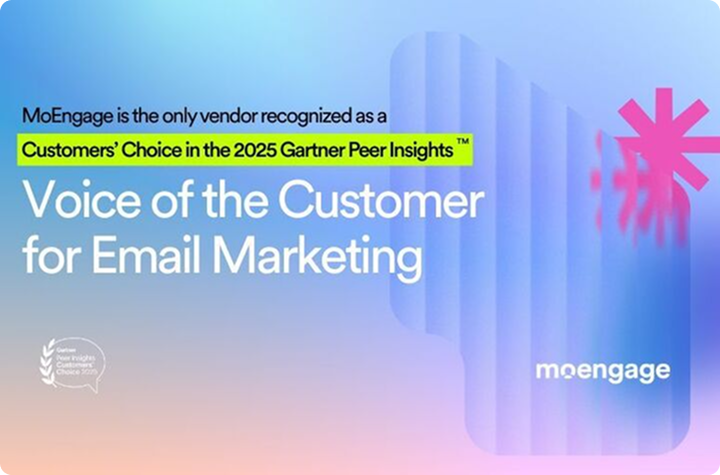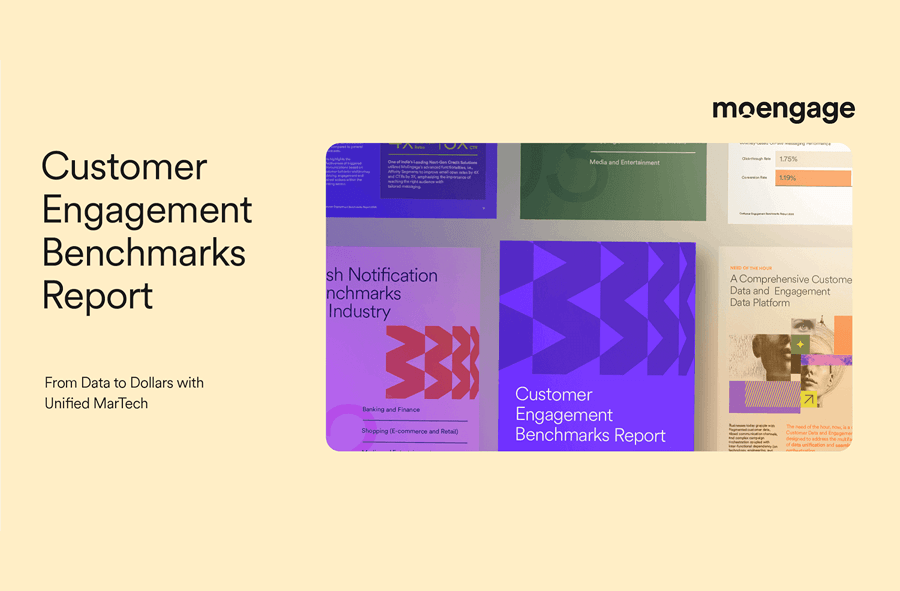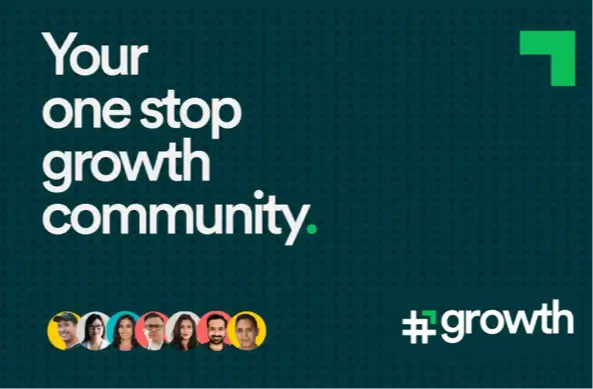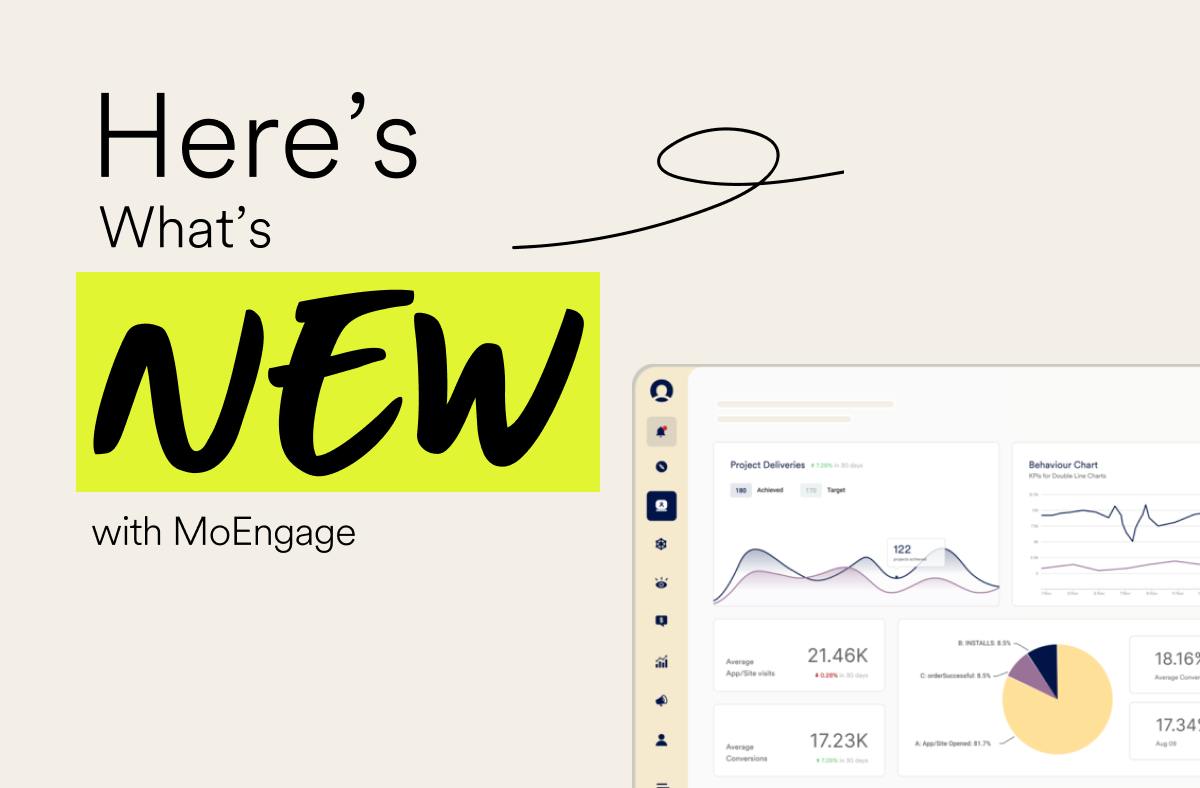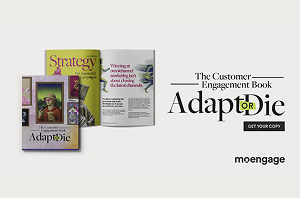Vish Ramkissoon Q&A: Customer Engagement Book Interview
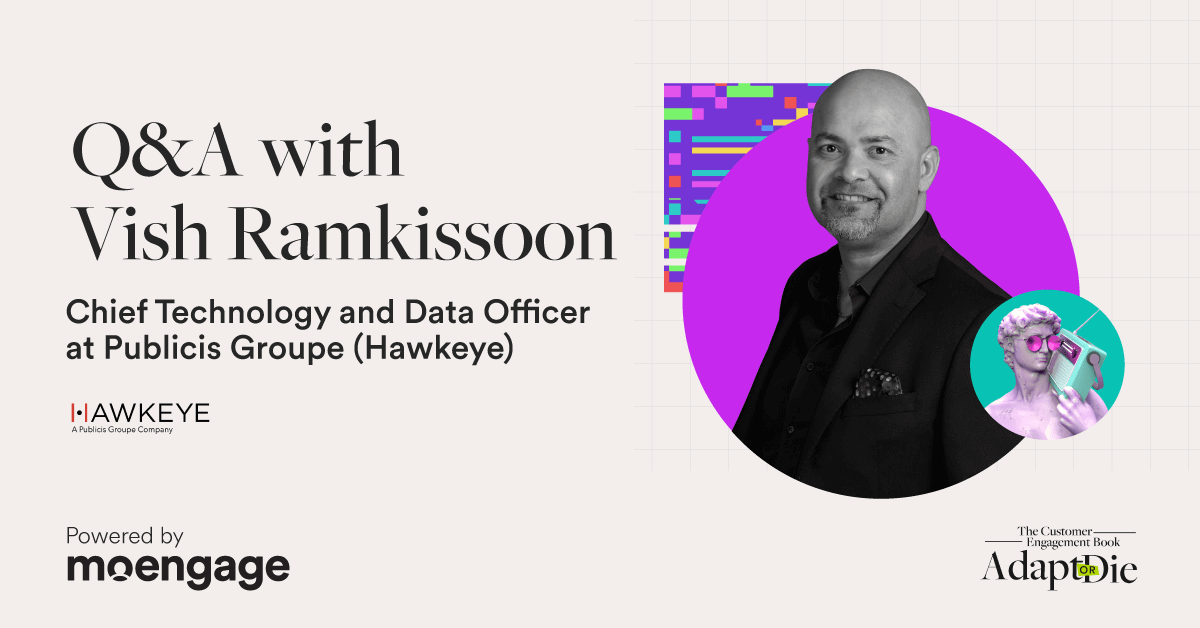
Reading Time: 8 minutes
In the B2C marketing landscape, understanding and leveraging customer engagement data is a necessity for survival.
In Chapter 6 of “The Customer Engagement Book: Adapt or Die,” we delve deep into how businesses can harness this data to not only stay afloat but thrive in a data-driven world. To bring this chapter to life, we sat down with Vish Ramkissoon, a leading expert from Publicis Hawkeye.
In our insightful Q&A session, Vish unpacks the critical importance of customer engagement data in making strategic business decisions. He clarifies the distinction between actionable data and mere noise, emphasizing the need for a meticulous approach to data tracking.
Vish’s perspectives on the future of customer engagement data and its role in shaping business strategies in the years to come. This conversation is a must-read for anyone looking to truly understand and adapt to the data-centric future of business.
Vish Ramkissoon Q&A Interview
1. What types of customer engagement data are most valuable for making strategic business decisions?
All customer engagement data is important — any time they interact with one of our assets, whether that be an app or web, or if it’s an interaction such as a click-through or open for direct communication, whether that’s SMS, push in-app, email, and even on paid channels with ads.
All of that information is used to categorize the user and model likes, dislikes and preferences.
We can then use that to customize our next communication with that particular individual or enhance their experience based on previous interactions.
2. How do you distinguish between data that is actionable versus data that is just noise?
We have created a methodology called highly engaged visits (HEV) or high-value tasks, which is another way that we look at interactions on our clients’ digital assets.
Tracking an attribute or an event on an app or on the web for the sake of tracking it makes no sense. If we want to use data smartly, we need to do the due diligence ahead of time to track actionable attributes and events..
The way you configure the tracking will determine what you’re able to do with that data later on and can impact your ability to have ability to be able to have meaningful communication or the next desired best action with a particular customer.
3. How can customer engagement data be used to identify and prioritize new business opportunities?
In retail, that would be like identifying potential cross-category shoppers. So you think of Big Box Retailers, for example. There are many product categories such as electronics, clothing, and groceries.
Understanding how a customer engages with their brand and where they’re shopping can illuminate opportunities to get them to shop cross-category.
The benefit of doing that is obvious in terms of customer lifetime value.
Cross-category shoppers tend to stay longer with the brand, churn risk is vastly reduced, and their customer lifetime value spikes.
4. Can you share an example of where data insights directly influenced a critical decision?
One of the most surprising and impactful insights I’ve uncovered came while working with a pick-up truck manufacturer. At the time, the client was primarily focused on reaching a working-class audience — that was the assumed buyer persona.
But once we enriched their first-party data with a third-party data set and ran the analysis, something unexpected jumped out.
We found a statistically significant group of very affluent buyers (people with high net worth who were purchasing these trucks), not for utility, but for what they symbolized. It completely shifted our understanding of the customer base.
These weren’t just tools for work; for some, they were lifestyle statements.
That insight forced us to rethink our customer engagement strategy: who we were targeting, how we were speaking to them, and what kind of creative we were putting in front of them.
We created tailored content that spoke directly to that audience by highlighting features, experiences, and brand cues that resonated with their values and lifestyle.
What’s powerful is that the client still uses that strategy today.
It’s a great example of how data, especially when it reveals something you weren’t looking for, can fundamentally reshape your approach and drive real, lasting results.

5. How do you use engagement data to shape your marketing strategy in real time or your clients?
From a technology and data strategy perspective, I tend to avoid the term “real-time” in marketing communications, opting instead for “near real-time.”
The distinction is important: being too fast can sometimes backfire. Take abandoned cart emails as an example: sending a follow-up immediately after a cart is abandoned can feel intrusive or even irrelevant.
Instead, we take a test-and-learn approach, experimenting with different delays and message cadences to identify what actually drives engagement and conversion.
This allows us to refine our timing models iteratively and improve performance over time.
Where real-time data does provide clear value is in-session personalization.
For example, on a retail website, when a customer adds an item to their cart, we can trigger an event instantly to update product recommendations. This enhances the browsing experience by surfacing complementary or commonly bundled products, driving higher engagement and average order value.
We also leverage real-time behavioral signals to drive contextual offers.
If a customer has shown interest in a category, say, shoes, but hasn’t added anything to their cart, we can surface a targeted promotion before checkout.
These kinds of real-time capabilities, when implemented thoughtfully, enable us to create more relevant, frictionless customer journeys while maximizing both experience and business outcomes.
6. How can marketers ensure their use of customer engagement data aligns with broader business objectives?
Our objective-setting process is grounded in data.
We don’t move forward without clear evidence to support the decisions behind each goal.
Whether we’re aligning with a C-suite directive, driving toward an OKR, or meeting customer engagement metrics tied to shareholder expectations, we treat data as the foundation, not an afterthought.
In my view, data solves all arguments and should steer prioritization. If we can’t validate a business objective with measurable inputs, it doesn’t belong in the roadmap.
Our job is to ensure every initiative is defensible, trackable, and optimized for impact.
7. What challenges do marketers face when trying to translate customer engagement data into these actionable business insights?
One of our biggest challenges is data fragmentation.
Critical customer data is still trapped in functional silos, product teams manage product usage data, transactional data sits in the CDP, paid media teams rely on data in ad tech platforms, and direct-to-consumer marketers operate on yet another system.
Without a unified profile, it’s impossible to achieve a true 360-degree view of the customer. Democratizing data across the organization is not just a technology problem; it’s a structural and operational one. Solving it is foundational to everything else we want to accomplish as marketers.
The second major challenge is personalization at scale. We serve tens of millions of customers, each with their own preferences, behaviors, and needs. Designing bespoke communications for each one isn’t just impractical, it’s impossible without a fundamentally different approach.
To address this, we’re shifting how we work.
One strategy involves building a library of pre-approved modular content, offers, copy, imagery, and templates that can be dynamically assembled to create highly relevant, personalized customer experiences. This allows us to maintain control over brand and compliance while scaling 1:1 communications efficiently.
We’re also actively experimenting with generative AI.
By training models on our brand voice, tone, and eligibility rules, and putting the right guardrails in place, we can safely generate personalized content that meets our standards; legal, creative, and strategic.
Done right, this allows us to combine precision and scale in ways that were simply not possible before.
8. What technologies or tools have you found most effective for gathering and analyzing customer engagement data?
To effectively understand customer engagement, we rely on a stack of technologies that work in concert. First, we use behavioral tracking platforms that capture event and attribute data across both web and app environments.
These tools give us deep visibility into session behavior, how customers navigate, what they engage with, and where friction points exist.
We also place a strong emphasis on our direct-to-consumer communication stack—covering in-app messaging, push notifications, SMS, and email.
Every touchpoint in that system generates interaction data, which becomes critical for understanding how customers respond to different types of messaging and timing strategies.
To unify all of this, we lean heavily on our composable customer data platform (CDP). The CDP is where everything comes together, behavioral signals, transactional data, engagement metrics.
It gives us that single, holistic view of the customer, which is foundational for personalized experiences at scale.
And finally, analytics. We approach this from two angles: data visualization and performance measurement.
Visualization helps us uncover patterns and insights quickly, while more traditional analytics allows us to evaluate effectiveness, whether in near real-time or through post-campaign analysis.
Together, this ecosystem allows us to move from reactive to predictive, and ultimately, to proactive engagement strategies.
9. How do you ensure data quality and consistency across multiple channels to make informed decisions?
Data quality starts upstream at the point of collection.
One of the most common mistakes organizations make is moving too quickly to define what data they want without spending enough time thinking about how that data is collected and structured. If we don’t get that part right, everything downstream analytics, personalization, reporting suffers.
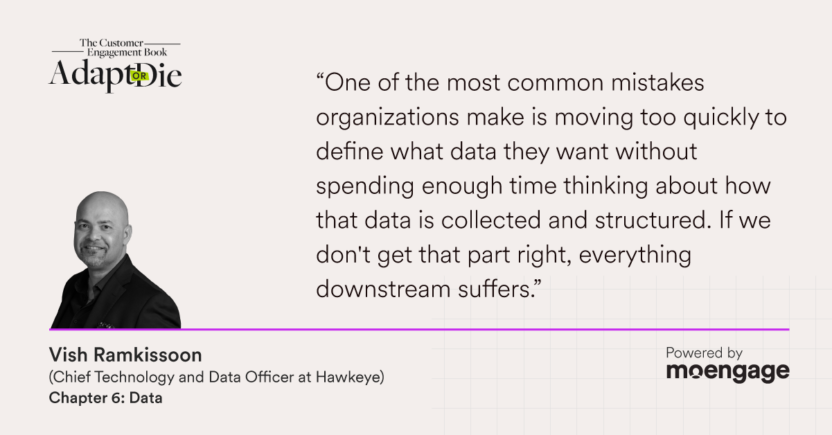
Standardization is key.
We invest heavily in upfront schema design and data normalization, because consistent input leads to scalable and reliable analysis.
A simple example I often give is a date field. If a date is captured as a string instead of a proper date format, you lose the ability to apply even basic logic like filtering by time windows. Multiply that across dozens of fields and channels, and it becomes a serious liability.
We also build validation logic directly into our data entry and ingestion points.
Take email, for example. It’s surprising how many systems still allow invalid email formats into their databases. A basic syntax check ensuring the presence of an “@” symbol, a domain, and the absence of illegal characters.
So we can avoid collecting a bunch of garbage and then realize, “Oh well, only 90% or 80% of the email addresses we have are contactable.”
Ultimately, data quality isn’t a one-time fix. It requires a disciplined approach, embedded into both our technology stack and our operational culture. We think about data integrity from day one—because without it, we’re flying blind.
10. How do you see the role of customer engagement data evolving in shaping business strategies over the next five years?
Over the next five years, customer engagement data will move from being a supportive asset to a strategic cornerstone of business decision-making. The capabilities of technology platforms, especially in data processing and AI are evolving rapidly.
What’s lagging isn’t the tech, it’s organizational readiness, particularly with how teams, especially in marketing are structured and how they operate.
To truly leverage engagement data, we need to shift from a campaign-centric mindset to a decision-centric one.
Instead of asking, “What campaign should we send next?” The better question is, “What decision should we make for this customer, at this moment?” That’s the shift from broadcasting to orchestrating meaningful, contextual, one-to-one interactions.
But that level of personalization requires scale, and scale demands automation.
This is where AI becomes essential. We’re going to rely more heavily on AI to generate content dynamically within brand parameters, compliance rules, and contextual relevance so we can meet customers where they are, with messaging that actually matters.
What ties it all together is data.
Engagement data is what fuels both the decisioning logic and the AI models behind it. And as data becomes richer and more immediate, our ability to turn insight into action will define a competitive advantage.
The businesses that embrace that evolution not just in technology, but in mindset, will lead.
This interview Q&A was hosted with Vish Ramkissoon, Chief Technology and Data Officer at Publicis Groupe/Hawkeye, for Chapter 6 of The Customer Engagement Book: Adapt or Die.
Download the PDF or request a physical copy of the book here.

